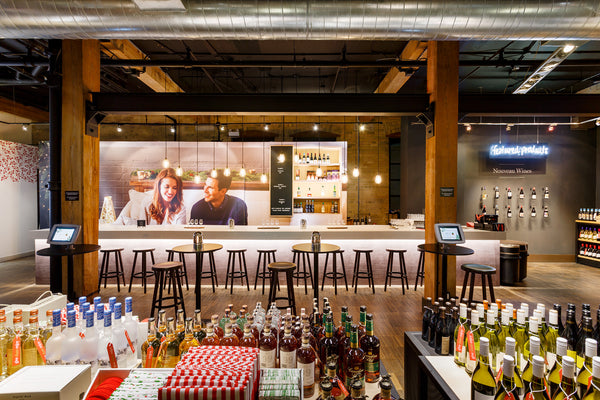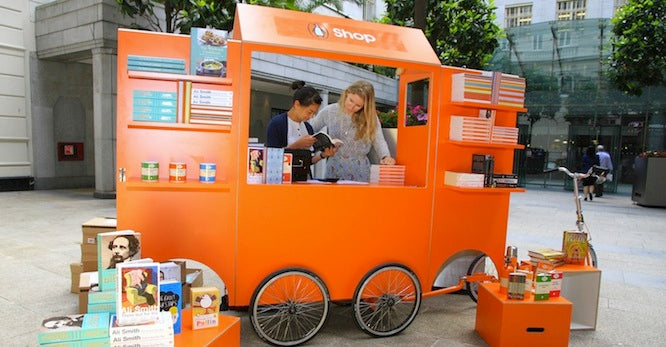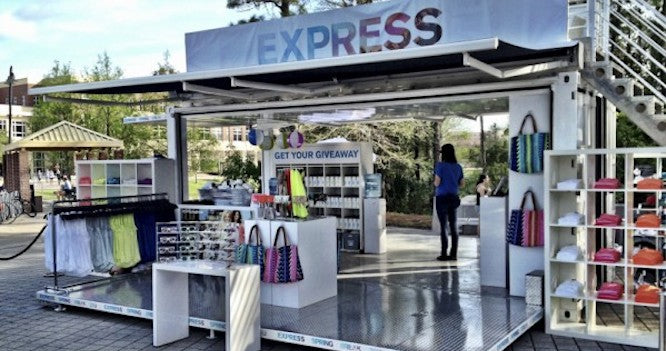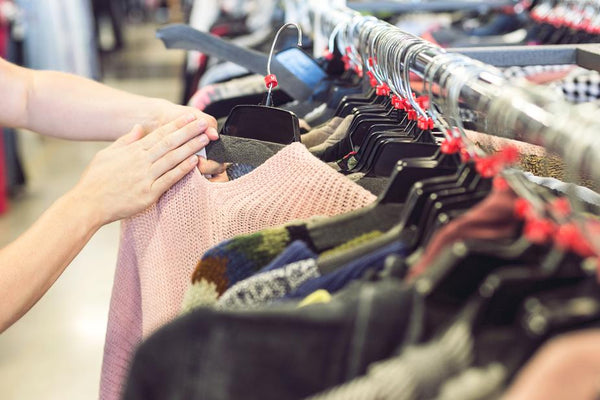You might be convinced that selling offline is too risky and expensive for your brand. Maybe you've heard the horror stories about retail and dealing with customers in person. But what if we told you that you were missing out on a major opportunity — one that comes with little-to-no commitment and minimal costs?
There's a retail medium that helps brands enjoy the benefits of selling offline without forking out all their cash for a storefront: a pop-up store. According to Storefront, temporary retail, more commonly known as a pop-up store, are expected to generate $80 billion on an annual basis.
Fortunately, there's an abundance of locations you might try for a pop-up store while keeping in mind that you're in good company as more online brands test out offline sales.
Hosting a pop-up store boasts a number of benefits. And while many of these advantages are dependent upon your brand and the type of pop-up store you host, we've rounded up eight of the most common reasons you should consider temporary retail.
1. Test a New Revenue Stream

Hosting a pop-up store offers a unique opportunity to experiment with offline sales. That's because pop-ups don’t cost nearly as traditional storefronts (i.e. no long-term retail leases and no need to invest in as much inventory).
Secondly, if you happen to be in the right place at the right time, you could rake in significant profits for your business without the risks that traditional retailers incur.
For example, before Indochino opened their showrooms, the bespoke menswear brand tested the waters in multiple markets with its traveling tailor tour. Customers could drop by to get measured, fitted, and styled while making the final purchase online.
Received confirmation for my @indochino Travelling Tailor appointment. #Stoked on this initiative! Time to get suited. http://t.co/alB3vsV2
— Andrew Soro (@soro) November 4, 2011
2. Engage Customers Offline
 For many online shoppers, not being able to see and feel a product in person before purchasing it can be a real pain point. There’s just something about being able to try before you buy that comforts potential customers. In fact, a recent study from ReadyCloud showed that 88% of shoppers are “webrooming” regularly (browsing online, then purchasing in a store).
For many online shoppers, not being able to see and feel a product in person before purchasing it can be a real pain point. There’s just something about being able to try before you buy that comforts potential customers. In fact, a recent study from ReadyCloud showed that 88% of shoppers are “webrooming” regularly (browsing online, then purchasing in a store).
And if you’ve attempted to solve the dilemma by shipping products to customers before they’ve made a purchase — like Warby Parker's home try-on program — you’ll be quick to find that the cost of opening a pop-up store may be a cheaper way to overcome this obstacle.
Pop-up store customers have the chance to touch, try on, and demo products in person before having to make a purchase. And interacting with customers face-to-face allows retailers to address their concerns on the spot and have a more direct influence on their buying decision.
3. Tap Into “Massclusivity” and Create “Get It While It Lasts” Urgency
 According to research, about 71% of consumers are shopping online to find the best price while in a brick-and-mortar store, a process that is commonly referred to as "showrooming."
According to research, about 71% of consumers are shopping online to find the best price while in a brick-and-mortar store, a process that is commonly referred to as "showrooming."
But don't panic — there are plenty of ways retailers can keep showrooming from cutting into their sales. A pop-up store has one of those strategies baked right into the concept.
Creating a sense of urgency or scarcity, for example, causes humans to take action. Because a pop-up store is temporary by nature, customers are less likely to delay purchases. In other words, when you walk into a pop-up store, the thought that items won’t be around for long causes consumers to be more willing to purchase something on the spot.
This principle works even better if what you’re selling in your pop-up store is a unique product that can't be found elsewhere.
4. Market Merchandise Around a Sale, Season, or Holiday

According to a PopUp Republic report, 61% of shoppers list seasonal products as the main reason to shop at pop-up shops over the holidays. So, why not get in on the holiday shopping action?
Whether you're thinking of selling party wear for New Years, chocolates for Valentines, costumes for Halloween, or gifts for Black Friday-Cyber Monday, you can get a slice of those sales with a pop-up store. Holiday pop-up stores are an effective way to promote new products, test out an emerging market, liquidate surplus inventory, and increase brand awareness — all while keeping overhead costs low.
5. Educate New Customers
 Maybe you’ve got a new invention that hasn’t made it into the mass consumer subconscious yet. Even if you’re just looking to drive pre-orders, giving your potential customers a live demo or walking them through how your product works is a great way to reach early adopters.
Maybe you’ve got a new invention that hasn’t made it into the mass consumer subconscious yet. Even if you’re just looking to drive pre-orders, giving your potential customers a live demo or walking them through how your product works is a great way to reach early adopters.
Or maybe you've got a product that makes people scratch their heads, like beard oil for urban beardsmen, or plastic wrap alternatives made out of beeswax. A pop-up store is a great way to demonstrate the value of your product and get people hooked on its value.
One example of this is Microsoft, which opened a string of pop-ups to help customers better understand how to use their new Surface tablets.
6. Go to Where Your Customers Are
 The other benefit of a pop-up store versus investing in a long-term physical retail space is that you’re free to go wherever your customers are. Your pop-up could take shape as a food truck or a mobile store.
The other benefit of a pop-up store versus investing in a long-term physical retail space is that you’re free to go wherever your customers are. Your pop-up could take shape as a food truck or a mobile store.
The benefit of being able to select a certain side street, kiosk, or vacant gallery space is that you can match your wares with the personality of a given demographic and go to where they go.
Want to learn more about what you need to take your business on the road? Check out our guide to taking your business on the road.
7. Generate Brand Awareness
 With so many online retailers competing for attention, sometimes it can be challenging to stand out from the crowd. Whether it's getting your site to rank in search engines or generating engagement on social media, it's a challenge to get your products in front of your target customers online.
With so many online retailers competing for attention, sometimes it can be challenging to stand out from the crowd. Whether it's getting your site to rank in search engines or generating engagement on social media, it's a challenge to get your products in front of your target customers online.
However, you can build buzz than by soliciting customers who never would have found your brand had it not been for a pop-up store.
One of the best examples of this is the pop-up Marc Jacobs hosted to promote its Daisy fragrance line, where they accepted "social currency" in exchange for its products. That included tweeting or posting on Instagram with the hashtag #MJDaisyChain.

8. Unload Old Inventory
 Lastly, offline sales are a great way to shed old inventory that's been cluttering up your shelves. Pop-up stores provide a prime opportunity for brands to liquidate that stale inventory and get some inspiration for new products from the customers they meet in the process.
Lastly, offline sales are a great way to shed old inventory that's been cluttering up your shelves. Pop-up stores provide a prime opportunity for brands to liquidate that stale inventory and get some inspiration for new products from the customers they meet in the process.
While it might not be the most inspiring reason to host a pop-up store, from a business perspective, why take a loss when you could potentially have a hit on your hands selling something offline that you had trouble selling online?
Moving Forward With Your Own Pop-up Store
Now that you know some of the opportunities that a pop-up store can offer your brand, it's time to take action. If you're ready to host your own pop-up store, check out our step-by-step pop-up guide to get started.
